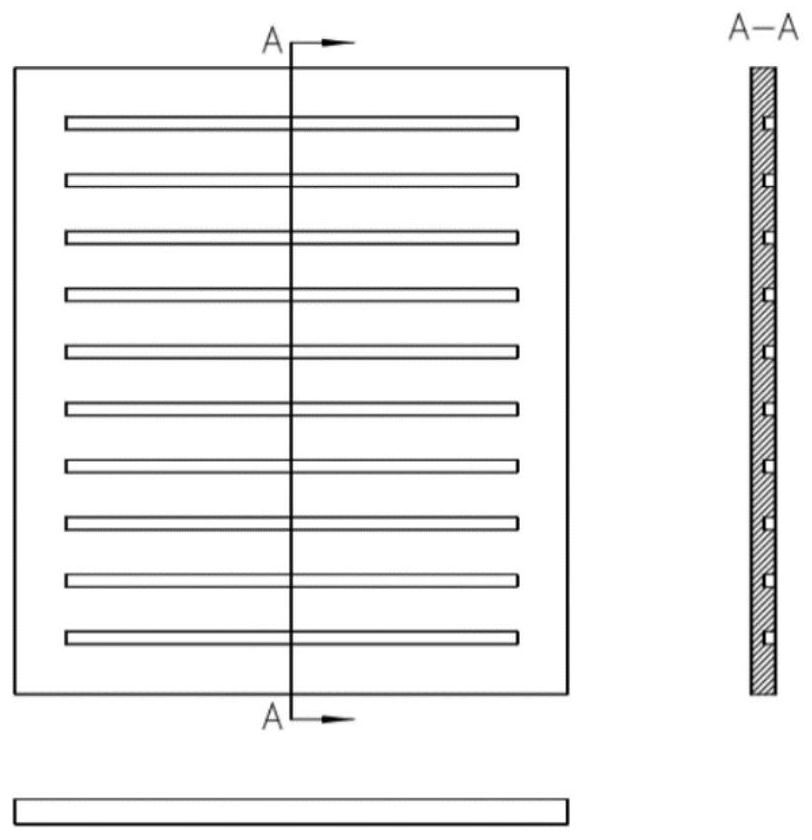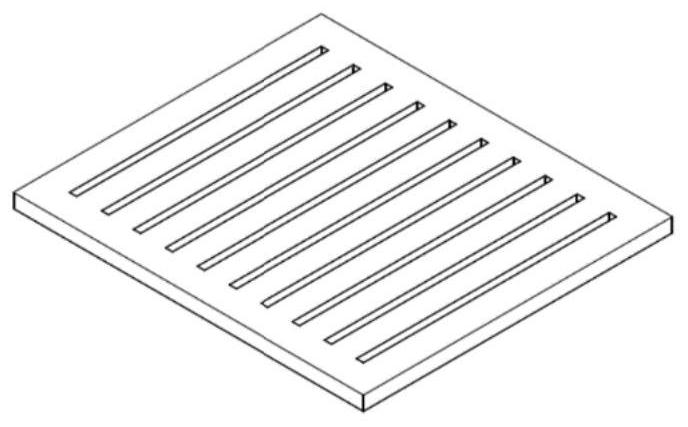Preparation method of SiC composite material through in-situ reaction in fiber bundle
An in-situ reaction and composite material technology, applied in the field of preparation of fiber-reinforced ceramic matrix composite materials, can solve the problems of affecting the service life and reducing the high-temperature oxidation resistance of composite materials, so as to improve the degree of densification and increase the yield of high-temperature ceramics. The effect of ensuring uniformity
- Summary
- Abstract
- Description
- Claims
- Application Information
AI Technical Summary
Problems solved by technology
Method used
Image
Examples
Embodiment 1
[0032] Step 1. Evenly mix the high carbon residue polycarbosilane, SiC powder and silicon powder, and mix them by ball milling for 2 hours to obtain a uniformly mixed liquid precursor slurry, high carbon residue polycarbosilane, SiC powder, and silicon powder. The weight ratio is 2:2:1;
[0033] Step 2, in a muffle furnace, in an air atmosphere, treat at 500°C for 4 hours to remove the sizing agent;
[0034] Step 3, depositing a pyrolytic carbon (PyC) interface layer on the surface of the fiber bundle, and then depositing a SiC interface layer with a thickness of 300 nm;
[0035] Step 4, the deposited fiber bundle is cut into a long section of 15cm, and evenly placed on the graphite tooling (such as figure 1 (shown), pour the prepared slurry into the slurry, the fibers are completely immersed in the slurry, put into a vacuum oven, and immersed in a vacuum for 2 hours to obtain a fiber precursor slurry;
[0036] Step 5. Take out the impregnated fiber bundles from the slurry, ...
Embodiment 2
[0041] Step 1. Evenly mix the high carbon residue polycarbosilane, SiC powder and silicon powder, and mix them by ball milling for 3 hours to obtain a uniformly mixed liquid precursor slurry, high carbon residue polycarbosilane, SiC powder, and silicon powder. The weight ratio is 1:1:2;
[0042] Step 2, in a muffle furnace, in an air atmosphere, treat at 450 ° C for 2 hours to remove the sizing agent;
[0043] Step 3, depositing a pyrolytic carbon (PyC) interface layer on the surface of the fiber bundle, and then depositing a SiC interface layer, with thicknesses of 200 nm and 600 nm, respectively;
[0044] Step 4, the deposited fiber bundle is cut into a long section of 15cm, and evenly placed on the graphite tooling (such as figure 1 In the slot shown in (shown), pour the prepared slurry, the fibers are completely immersed in the slurry, put into a vacuum oven, and immersed in a vacuum for 3 hours to obtain a fiber precursor slurry;
[0045] Step 5. Take out the impregnate...
Embodiment 3
[0050] Step 1: Mix the high carbon residue polycarbosilane, SiC powder and silicon powder evenly, and mix them by ball milling for 4 hours to obtain a uniformly mixed liquid precursor slurry, high carbon residue polycarbosilane, SiC powder, and silicon powder. The weight ratio is 5:1:4;
[0051] Step 2, in a muffle furnace, in an air atmosphere, treat at 500°C for 4 hours to remove the sizing agent;
[0052] Step 3, depositing a pyrolytic carbon (PyC) interface layer on the surface of the fiber bundle, and then depositing a SiC interface layer, with thicknesses of 300 nm and 400 nm, respectively;
[0053]Step 4, the deposited fiber bundle is cut into a long section of 15cm, and evenly placed on the graphite tooling (such as figure 1 (shown), pour the prepared slurry into the slurry, and the fibers are completely immersed in the slurry, put into a vacuum oven, and immersed in a vacuum for 5 hours to obtain a fiber precursor slurry;
[0054] Step 5. Take out the impregnated fi...
PUM
 Login to view more
Login to view more Abstract
Description
Claims
Application Information
 Login to view more
Login to view more - R&D Engineer
- R&D Manager
- IP Professional
- Industry Leading Data Capabilities
- Powerful AI technology
- Patent DNA Extraction
Browse by: Latest US Patents, China's latest patents, Technical Efficacy Thesaurus, Application Domain, Technology Topic.
© 2024 PatSnap. All rights reserved.Legal|Privacy policy|Modern Slavery Act Transparency Statement|Sitemap


